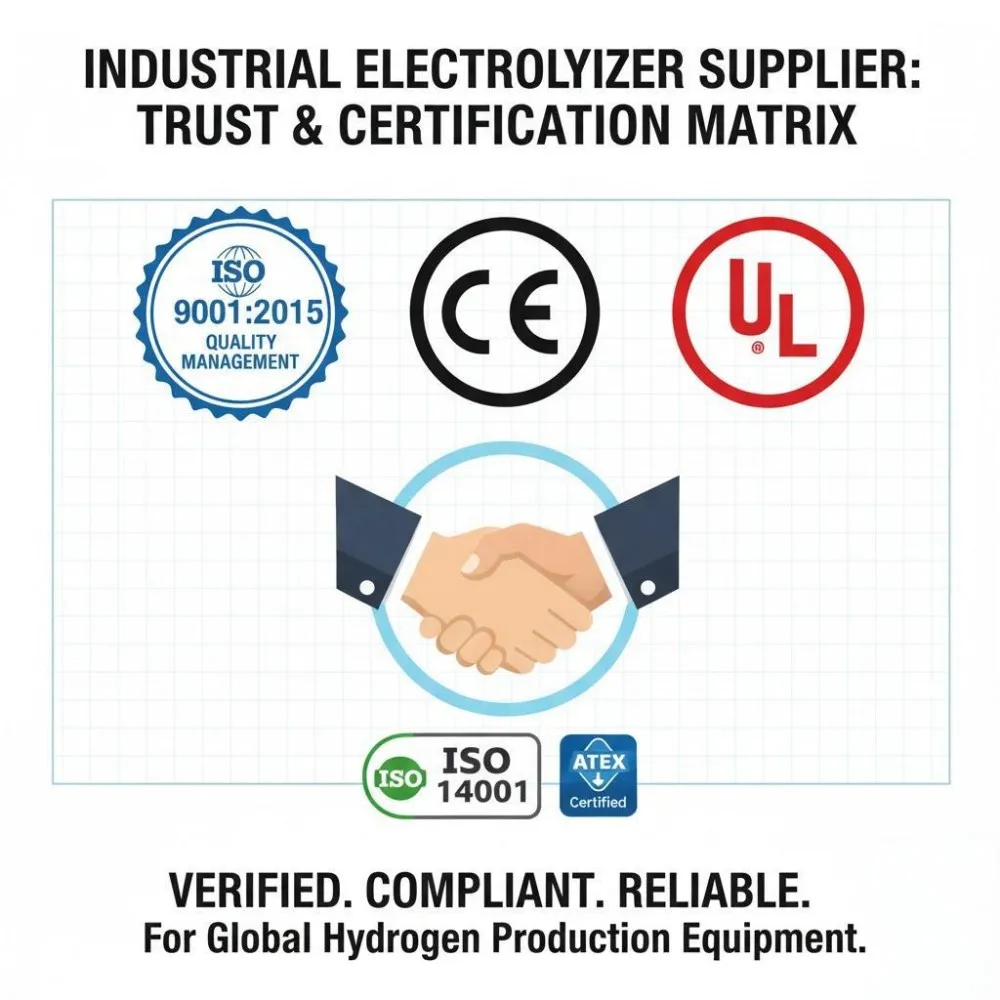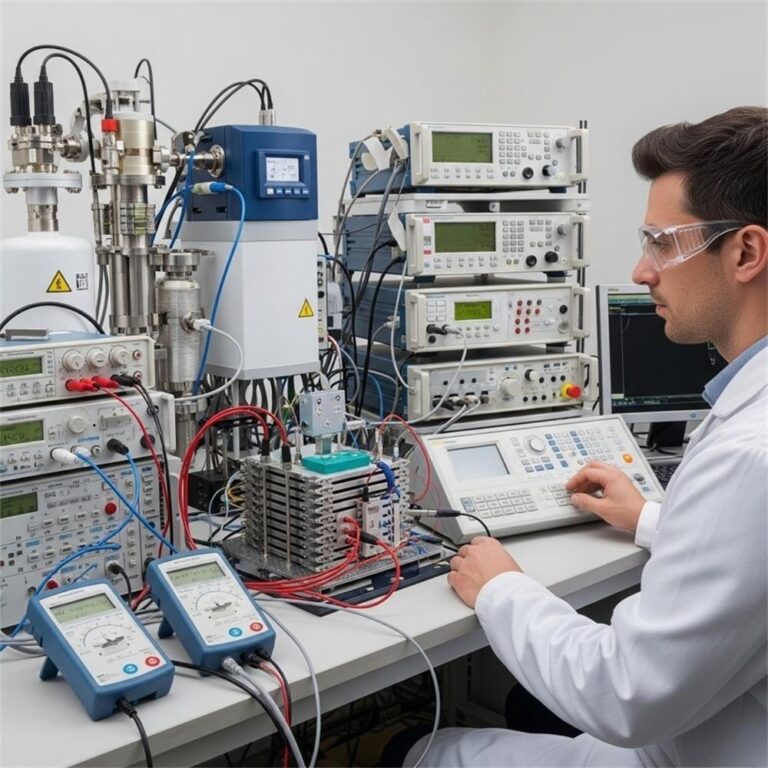I. Introduction: The Symbiotic Relationship of Fuel Cells and Hydrogen
Fuel cells have become a key player in the push toward cleaner, more sustainable energy solutions. Whether powering vehicles, supporting data centers, or providing backup power in remote areas, these electrochemical devices convert hydrogen into electricity with high efficiency and zero harmful emissions.
Hydrogen is at the heart of this process—serving as the vital fuel that drives performance. However, not all hydrogen is created equal. The method of its production, its purity, and its delivery system play a crucial role in the functionality and longevity of fuel cells. That’s where hydrogen generators come in.
A hydrogen generator for fuel cell applications, especially those using hydrogen PEM (Proton Exchange Membrane) technology, is designed to provide ultra-pure hydrogen on-demand. This ensures optimal performance, minimal degradation, and seamless operation across a wide range of environments and power demands.

II. Understanding Fuel Cell Requirements: What Makes a Hydrogen Generator Suitable?
A. Purity Levels
Fuel cells—especially PEM fuel cells—require hydrogen of ultra-high purity (typically 99.999% or “five nines” pure). Even trace amounts of contaminants such as carbon monoxide or sulfur compounds can poison the catalyst, dramatically reducing performance and lifespan.
A hydrogen generator must, therefore, consistently produce gas that meets or exceeds these standards. PEM electrolysis is known for delivering hydrogen with the required purity, making it a top choice in high-performance environments.
B. Flow Rate and Pressure
Fuel cells vary in their consumption needs:
- Stationary systems (e.g., backup power units) may have steady, moderate hydrogen demands.
- Automotive applications demand high flow rates and quick ramp-up capabilities.
- Portable systems require compact solutions with optimized pressure delivery.
An ideal generator matches these needs precisely—supplying hydrogen at the correct pressure and volume without lag or surplus, which can be wasteful and potentially hazardous.
C. Response Time
Response time is critical in dynamic environments. If the hydrogen generator can’t keep up with the fuel cell’s fluctuating power demand, it may cause power instability or downtime. Generators with fast ramp-up capabilities, such as those using PEM technology, offer a distinct advantage here.
III. Hydrogen Purity Considerations: PEM Electrolysis and Beyond
A. PEM Electrolysis Technology
PEM (Proton Exchange Membrane) electrolysis splits water into hydrogen and oxygen using an electrically conductive membrane. What makes PEM so suitable for fuel cells?
- High Purity: PEM systems generate hydrogen of 99.999% purity without needing extensive purification steps.
- Compact Design: Smaller footprint makes them ideal for mobile and space-constrained environments.
- Dynamic Response: PEM electrolysis responds quickly to load changes, aligning with the varying demands of modern fuel cell systems.
B. Comparing Hydrogen Generation Methods
| Generation Method | Purity Level | Response Time | Footprint | Suitability for PEM FC |
|---|---|---|---|---|
| PEM Electrolysis | 99.999% | Fast | Compact | Excellent |
| Alkaline Electrolysis | 99.5%–99.9% | Moderate | Larger footprint | Moderate |
| Steam Methane Reforming | ~97–99% | Slow | Industrial scale | Poor (needs purification) |
PEM electrolysis clearly stands out for fuel cell use cases requiring high-purity, scalable hydrogen production.
IV. Choosing the Right Hydrogen Generator: A Selection Guide
A. Matching Generator Capacity to Fuel Cell Load
Selecting the right size is vital. Oversized systems cost more upfront and to operate. Undersized generators won’t meet demand, leading to energy loss and inefficiency. Start by calculating the maximum hydrogen consumption of your fuel cell under peak loads, then add a buffer for safety.
B. Footprint and Scalability Considerations
In constrained environments (e.g., vehicle interiors, telecom towers), a compact footprint matters. Some PEM hydrogen generators are modular, allowing for scalability as hydrogen demand increases—offering long-term flexibility.
C. Maintenance and Operational Costs
Maintenance varies:
- PEM Systems: Low maintenance, fewer moving parts.
- SMR Systems: High maintenance, involves hazardous materials.
- Alkaline Systems: Moderate upkeep, especially for electrolyte replacement.
Though PEM systems may have higher initial costs, their low operating expenses and minimal downtime make them a smart long-term investment.
V. The Integration Process: Connecting Hydrogen Generator to Fuel Cell System
A. System Design and Safety Protocols
Proper integration involves:
- Piping and Connections: Leak-proof, pressure-rated for hydrogen.
- Ventilation Systems: To prevent hydrogen accumulation.
- Sensors and Alarms: For hydrogen detection and emergency shutdown.
Safety is non-negotiable, especially since hydrogen is flammable in specific concentrations.
B. Monitoring and Control Systems
Hydrogen generators should integrate seamlessly with your fuel cell’s energy management system (EMS). This enables real-time monitoring of:
- Hydrogen flow rates
- Purity levels
- Pressure
- Faults or anomalies
Automated feedback loops can adjust generator output to match system demands, ensuring optimal performance and safety.
VI. Case Studies: Real-World Applications of Optimized Fuel Cell Systems
A. Transportation
Hydrogen-powered vehicles like buses and trucks use onboard PEM hydrogen generators to reduce dependence on external fueling stations. Results include:
- Faster refueling
- Increased driving range
- Near-zero emissions
B. Stationary Power
In critical infrastructure like hospitals and telecom towers, fuel cell systems powered by on-site hydrogen generators offer:
- 24/7 backup power
- Grid independence
- Lower carbon footprint
C. Portable Power
Fuel cell systems equipped with compact hydrogen generators are ideal for:
- Remote work sites
- Military operations
- Emergency relief efforts
They provide silent, clean energy where diesel generators are impractical or polluting.
VII. Conclusion: The Future of Fuel Cells is Fueled by Optimized Hydrogen Generation
Hydrogen generators—especially those based on hydrogen PEM technology—are revolutionizing fuel cell systems. Their ability to deliver high-purity hydrogen reliably and efficiently is critical to unlocking the full potential of clean, high-performance fuel cells.
As the global shift toward decarbonization accelerates, the integration of well-matched hydrogen generators with fuel cell systems will be key. From energy security to environmental responsibility, the advantages are undeniable.
VIII. Call to Action
For B2B Audience: Ready to optimize your fuel cell system with a reliable hydrogen generator? Contact us today to discuss your specific requirements and discover how our cutting-edge hydrogen generation solutions can enhance your fuel cell performance and efficiency.
Incentive: Get a free consultation and customized solution proposal.
Frequently Asked Questions (FAQs)
1. What is a hydrogen generator for fuel cells? It is a device that produces hydrogen gas—usually through PEM electrolysis—to supply fuel cells with clean, pure hydrogen for power generation.
2. Why is hydrogen purity important in fuel cells? Impurities can damage the fuel cell’s catalyst, reducing efficiency and shortening its lifespan. High-purity hydrogen ensures reliable and long-lasting performance.
3. What is hydrogen PEM? Hydrogen PEM refers to hydrogen produced via Proton Exchange Membrane electrolysis, a method known for high purity, fast response, and compact design.
4. Can I use any hydrogen generator with my fuel cell? No, it’s essential to match the generator’s capacity, pressure, and purity output to your fuel cell’s specifications.
5. How much maintenance does a PEM hydrogen generator require? Very little. PEM generators are known for their low-maintenance operation, thanks to fewer moving parts and minimal need for consumables.
6. Are hydrogen generators scalable for growing power needs? Yes. Many modern hydrogen generators are modular and scalable, allowing businesses to expand their capacity as needed.







